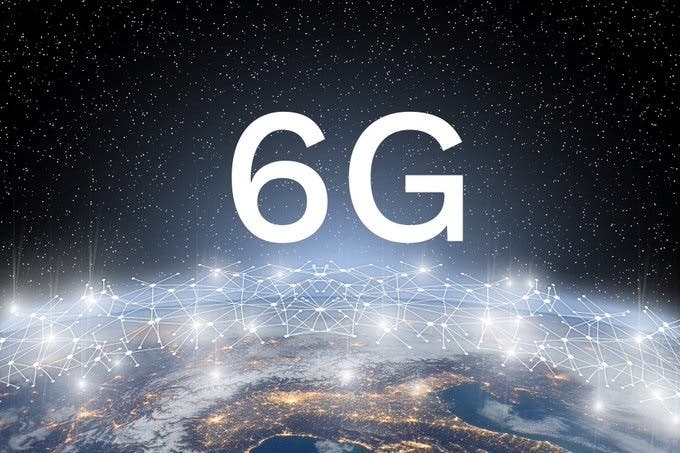Over the past two years, there has been a consistent development of 5G. However, it appears that the industry will not wait for 5G to mature before they start discussing 6G. Presently, industry practitioners are giving attention to commercialization, exploration, and discussion on 6G. As early as November 2019, the Ministry of Science and Technology in China initiated the 6G technology research and development. So far, there have been a number of 6G seminars in different parts of the world. Presently, China already has its 6G development plans and possible application scenarios. A recent special 5G/6G meeting of industry insiders in China revealed the countries top three development plans for the 6G network.

- One is to conduct in-depth research on 6G application scenarios. These researches will be on the basis of existing 5G as well as technological evolution and economic and social development trends. The research will concentrate on proposals for 6G vision requirements and application scenarios.
- The second is to focus on promoting key technological innovation breakthroughs. Focusing on potential 6G technologies such as terahertz communication, integration of communication and perception, and integration of communication and artificial intelligence. To actively plan, deploy, and build a solid foundation, and strive to make major breakthroughs in key core technology areas.
- The third is to actively promote international exchanges and cooperation.
Also, there was a presentation of a White Paper with the title “6G Overall Vision and Potential Key Technologies”. Let’s now look at the business application scenarios for 6G
Top business application scenarios for 6G
The overall vision of 6G is “Intelligent Connection of Everything Digital”. In the future, 6G services will present new development trends such as immersion, intelligence, and globalization. It will also focus on forming immersive cloud XR (extended reality), holographic communication, sensory interconnection, intelligent interaction, communication perception, inclusive intelligence, digital twins, and global coverage of major business applications.
Specifically, immersive business applications such as cloud-based XR, holographic communication, sensory interconnection, and smart interaction will bring users a more immersive and extreme experience. It will also meet the interaction needs of humans at multiple sensory, emotional, and conscious levels. Furthermore, this application will be popular in the entertainment industry, health industry, and other digital transformation industries.
Intelligent business applications such as communication perception, inclusive intelligence, and digital twins, with the help of new capabilities such as perception and intelligence, will not only further improve the performance of 6G communication systems but will also help complete the digitization of the physical world and promote humans to enter the virtualized digital twin world.
With the help of 6G, the global coverage of business will be seamless. With 6G, there will be a global integrated air-space-ground network. This means that there will not be any blind spots for mobile communication coverage on the earth. 6G business will provide more universal service capabilities and help the sustainable development of mankind.
Gizchina News of the week
Top potential key technologies
In order to meet the above business applications, there are also potential key technology directions for 6G. One of the potential technologies is the endogenous intelligent new air interface and new network architecture. We will also have the enhanced wireless air interface technology, new physical dimension wireless transmission technology, new spectrum use technology, communication perception integrated technology, and other new wireless technologies. Other trends will be in distributed network architecture, computing power-aware network, deterministic network, integrated satellite-ground network, network endogenous security, and other new network technologies.
Regarding the relationship between 5G and 6G development, there are proposals that 6G will transition from the Internet of Things (IoT) to the Intelligent Connection of Things. However, the foundation of 6G will be 5G. The successful commercialization of 5G, especially its wide application in vertical industries, will lay a good foundation for the development of 6G.
Regarding the issue of 6G spectrum resources, 6G will expand to higher frequency bands and efficiently use low, medium, and high full spectrum resources. Among them, the low-frequency spectrum will still be a strategic resource for 6G development. The millimeter waves will play a more important role in the 6G era, and higher frequency bands such as terahertz will focus on meeting the short-distance and large-capacity requirements of specific scenarios.
Regarding the issue of the evolution of 6G intelligence, endogenous intelligence will become an important feature of 6G. The deep integration of artificial intelligence and communication technology will trigger all-around innovation in network information technology.
In terms of 6G’s relationship with satellite, non-terrestrial communications, and cellular networks, 6G network will still be based on terrestrial cellular networks. Satellites, drones, air platforms, and other non-terrestrial communications will be integrated into the network.
Progress of 6G development in different regions
China
In China, the Ministry of Industry and Information Technology revealed in 2018 that it has begun to study 6G technology. In November 2019, the Ministry of Industry and Information Technology and the Ministry of Science and Technology launched 6G mobile communication technology research and development. This means that in China, 6G research and development is officially on.
U.S. and Japan
The United States and Japan announced a joint investment of $4.5 billion in the development of 6G. The United States will provide $2.5 billion while Japan will give $2 billion. Moreover, in order to further catch up with China’s development, the United States and Japan have also recruited Australia to cooperate and prepare to lay submarine communications cables in the Pacific.
South Korea
The South Korean government plans to invest a total of 200 billion won ($169 million) from 2021 to 2026. This fund will be to launch an unstandardized 6G mobile service pilot project in 2026. It is expected that 6G services will be available commercially between 2028 and 2030. According to reports, its 6G pilot projects include digital medical immersive content, autonomous vehicles, smart cities, and smart factories.
Germany
The German government plans to provide up to 700 million euros ($833 million) for 6G technology research by 2025.
Conclusion
The development of 6G is actively on. If we want to judge by the pace of the countries so far, China is clearly ahead again. The total number of global 6G communication network technology applications is 38,000, and China accounts for one-third of the share. This means that the country holds 35% and already sits on 13,449 6G patents.




